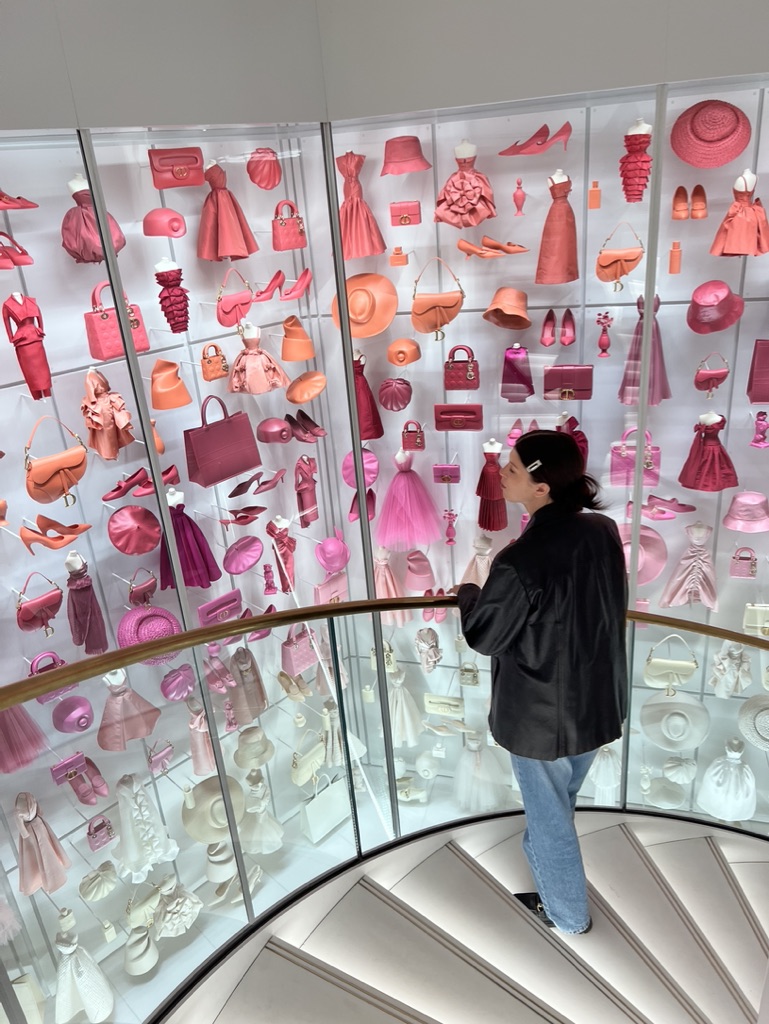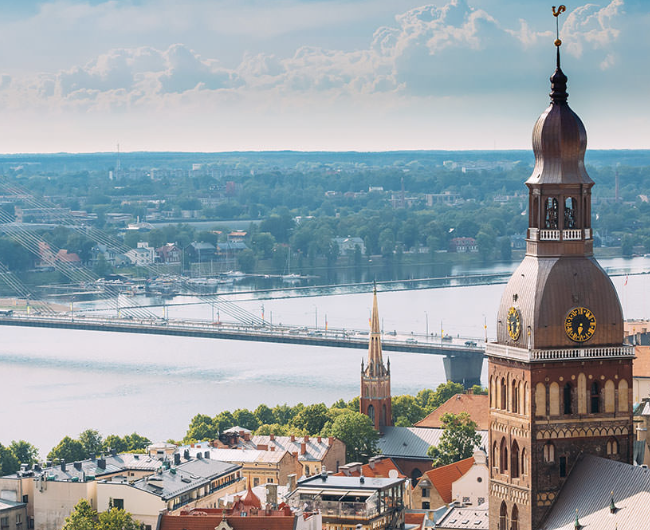
The Future of the Luxury Industry
Esseen tyyppi: Yksilöessee / 2 esseepistettä.
Introduction
The luxury industry has a lengthy history with an exclusive image. With the world’s constantly changing environmental and social situation, the luxury industry must be able to adapt to regulations and customer demands. The future of the industry will heavily depend on innovation, new technological advances, quality products or services, and sustainable development. This essay will refer to the Mckinsey 2023 Book of Fashion and Ellen MacArthur Foundation report on Circular Business Models to understand the future of the luxury industry and how it will need to improve.
The Luxury Industry
Luxury products and services are meant to provide an exclusive and special feeling for the customer, as not everyone is able to experience the luxury industry. Products can range from accessories to properties, but they all maintain the highest standard of quality to ensure loyalty and customer satisfaction. High quality products should be made with responsibly sourced materials and ensure longevity, since for some customers that may be the only luxury product they will ever own.
There are six words that can easily sum up the various aspects that each luxury brand has to consider: people, product, passion, pleasure, purpose, and price. For a brand to succeed and be deemed as important, there have to be people involved both in the management side and the customer side. To set the brand and product apart from others, and truly have it draw emotions from the customer, there must be a sense of purpose, passion, and pleasure. For some consumers, purchasing something luxurious is an experience and often a pleasure, whereas for others it’s a passion to find the perfect item. Passion is also an important part of designing and innovating the pieces that will be created, since they define the brand and the reputation at the same time. The last word, price, is the factor that characterizes the value of the product and can influence customers heavily. All luxury brands should be prepared to assist customers and at the end not sell anything, because it is common for the consumer to desire the luxurious experience, but not purchase anything.
Another aspect of luxury products is craftsmanship. The term craftsmanship refers to being skilled in a specific craft, such as sewing or leather works. Almost all luxury brands have a traditional product that started their growth, and it is typically linked to their expertise, or craft. In the luxury industry, this concept of expertise that sets brands apart from others and creates a unique image is known as “savoir-faire,” a French term meaning know-how. An example of a brand who prioritizes tradition through expertise is Loewe. The Spanish luxury brand is known for their expertly crafted leather handbags, as seen below. Their creative director continues to focus on training new craftsmen with traditional techniques to maintain the brand’s heritage and combines them with modern innovations and designs (LVMH N.d.).

PICTURE 1. Loewe handbag (Loewe N.d.).
What to Improve
Many luxury brands have a robust history that influences their products and choices to this day. However, today’s world looks a lot different than it did when some brands were founded. For example, the infamous leather brand Hèrmes was founded in 1837 in Paris, and many of their current choices have poorly influenced their reputation in recent years.
However, although the luxury industry may struggle with aligning themselves to new sustainability regulations, there are some measures that can be taken and some brands that have already done so. For example, Stella McCartney was able to innovate a vegan leather material to use for handbags, and Chloé received B Corp certification for being highly environmentally and socially responsible.
Luxury brands guarantee the highest quality products and services on the market, and changing their production methods or materials can compromise their customer satisfaction and loyalty. Which is why encouraging newer innovations and methods that preserve environmental resources, cut back on packaging or transportation, and focusing on their workers more are just a few ways to make larger changes and lower the threshold to becoming more sustainable.
Reports, Certifications, and Regulations
The B Corp certification is a certificate that companies receive for being highly socially and environmentally responsible. This certification, although paid for by the companies, is globally recognized and can drastically improve the company’s reputation. There are various levels of the B Corp status depending on the size and revenue of the company such as Small Enterprise, Medium Enterprise, and the largest being B Movement Builders which have an annual revenue of at least five billion dollars (B Corp n.d.). The certification is a way for companies to remain accountable and transparent in their actions towards social and environmental sustainability, which is an important aspect for companies if they want to continue to remain popular and respected.
The International Standardization Organization, or ISO, creates regulations or standards that companies should follow regarding all sorts of matters and provides assistance regarding those matters. The ones most related to the luxury industry are ISO 26000 and ISO 14001. ISO 26000 is a social responsibility assessment that ensures that the company is following guidelines related to equality, working conditions, ethical practices and more (ISO n.d.). Whereas ISO 14001 is about environmental resource management and how a company, no matter the size, should improve their environmental impacts (ISO n.d.).
McKinsey and Company publish an annual State of Fashion to report upcoming trends in the luxury industry and highlight key opportunities companies should consider (Amed, I & Berg, A 2022). The report for 2023 focuses greatly on economic troubles, geographic uncertainty, and customer’s tendencies in consumption which all influence brands. Average people must be considered when creating new products and using new marketing techniques because they are the ones being exposed to the changes and the increased use of social media creates faster trend cycles. Some of the themes include (Amed, I & Berg, A 2022):
- Global Fragility: uncertain situations around the world such as the energy crisis and Ukraine/Russia conflict disrupt manufacturing and supply chains which creates a fragile environment for all companies.
- Fluid Fashion: clothing has seen more of a shift towards designs that can be worn by anyone, and brands need to consider this when creating lines and choosing materials.
- Tackling Greenwashing: communicating sustainability must be transparent and accountable, because otherwise stakeholders will fooled and harm both the environment and society more.
Lastly, the Ellen MacArthur Foundation published a report on Circular Business Models in 2021 to help redefine the ways the fashion industry can seek opportunities and remain profitable. In a linear style market, all products are single-use and enter the market one time, whereas in a circular model, products can be repurposed or entered into the market in a new way to continue using the materials initially produced. One of the main takeaways from the report are the 4 R’s – Rent, Resell, Repair, Remake (Ellen MacArthur Foundation 2021). This suggests that companies should either extend their services by providing extensive lives for their products, or new brands should use this opportunity to make money and ease overconsumption at the same time. Additionally, designing longer lasting products and discovering new revenue streams are other ways for brands to support slow fashion and a circular economy.
Conclusion
The luxury industry constantly struggles with balancing tradition with new methods and regulations, and dealing with global challenges, however, it always maintains the goal of creating high quality products and experiences for people. There are multiple brands that have already moved into the right direction and encouraged others to do the same, and to the point of brands unable to change are starting to become irrelevant and receive poor feedback. Using the above mentioned reports and guidelines will help the industry develop further and seek new opportunities.
References
Amed, I & Berg, A. 2022. The State of Fashion 2023: Resilience in the Face of Uncertainty. Read 23.01.2023. https://www.businessoffashion.com/reports/news-analysis/the-state-of-fashion-2023-industry-report-bof-mckinsey/
B Corp. N.d. About B Corp Certification: Measuring a company’s entire social and environmental impact. Read 19.01.2023. https://www.bcorporation.net/en-us/certification
Ellen MacArthur Foundation. 2021. Circular business models: redefining growth for a thriving fashion industry. Read 22.01.2023. https://ellenmacarthurfoundation.org/news/circular-business-models-in-the-fashion-industry
ISO. n.d. ISO 14001 and related standards: Environmental management. Read 23.01.2023. https://www.iso.org/iso-14001-environmental-management.html
ISO. n.d. ISO 26000: Social responsibility. Read 22.01.2023. https://www.iso.org/iso-26000-social-responsibility.html
Loewe. N.d. Small Fringes Bucket bag in calfskin. https://www.loewe.com/eur/en/women/bags/totes/small-fringes-bucket-bag-in-calfskin/326.05AC19-2530.html
LVMH. N.d. Loewe. Read 17.01.2023. https://www.lvmh.com/houses/fashion-leather-goods/loewe/




Emilia Parikka
I enjoyed how you focused on pointing out clear ways to improve sustainability in regard to Luxury Fashion: Cut back on packaging, switching to vegan leather or focusing on workers. As mentioned in the essay Hèrmes is a great example of a luxury brand that keeps so tightly on of their past, that has bad effects regarding sustainability today and to mention this in the essay was a smart move to get started with the topic as the reader had a clear image in their mind of the “problem”.
After reading this essay, I feel I have an overview understanding of the different reports, certifications and regulations, and now it’s easier for me to start looking into them more, starting from the once I find most valuable and interesting to me right now.